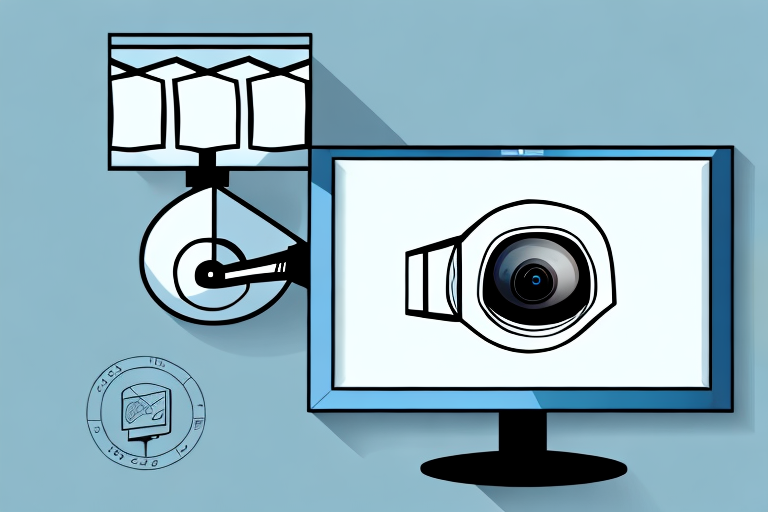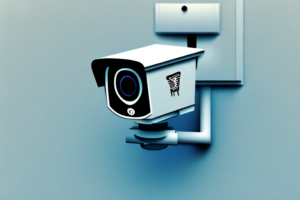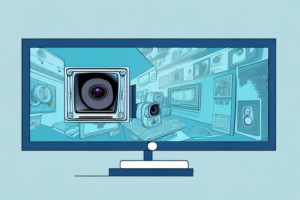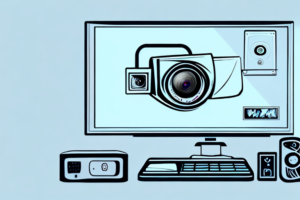CCTV, or Closed Circuit Television, is a popular video surveillance technology used across the world. CCTV cameras are used to monitor and record activities in public and private spaces. In this article, KTV Services, a reputable CCTV installer in Kent, will explore how CCTV technology works and the science behind it. We will also discuss CCTV in action, legal and ethical considerations, and the importance of balancing security and privacy.
Understanding CCTV Technology
What is CCTV?
CCTV is a monitoring and recording system that uses a combination of cameras, recorders, and video management software to capture and store video footage. This technology enables real-time monitoring of activities and can be used to identify and investigate security incidents. CCTV technology has been around for several decades, and its use has grown significantly in recent years with the advancements in digital technology.
Components of a CCTV System
A CCTV system typically consists of several components, including cameras, lenses, recorders, cables, and monitors. CCTV cameras capture video footage and transmit it to a recorder, which is used to store the footage. The recorded video footage can be accessed and reviewed remotely through a video management software program. The video management software also allows administrators to monitor multiple cameras from a single location.
The cameras used in a CCTV system can vary in size and shape depending on their intended use. Some cameras are designed to be discreet and blend in with their surroundings, while others are more visible to act as a deterrent to potential criminals. The lenses used in CCTV cameras can also vary, with some cameras having fixed lenses, while others have zoom lenses that can be adjusted remotely. The cables used to connect the cameras to the recorder can be either wired or wireless, depending on the location and environment in which the cameras are installed.
The recorder used in a CCTV system is responsible for storing the video footage captured by the cameras. The type of recorder used can vary, with some systems using digital video recorders (DVRs) and others using network video recorders (NVRs). DVRs are typically used for analog CCTV systems, while NVRs are used for IP-based systems.
Types of CCTV Cameras
There are several types of CCTV cameras available in the market, each with its unique features and functionalities. Some of the popular CCTV cameras include dome cameras, bullet cameras, PTZ cameras, and thermal cameras.
Dome cameras are commonly used for indoor surveillance and are designed to be discreet. They are typically mounted on the ceiling and have a wide-angle lens that can capture a large area. Dome cameras are also available in different sizes, with some being small enough to fit in the palm of your hand.
Bullet cameras, on the other hand, are designed for outdoor surveillance and are more visible than dome cameras. They are typically mounted on a wall or pole and have a long, cylindrical shape. Bullet cameras are also weather-resistant and can withstand harsh environmental conditions.
PTZ cameras are another type of CCTV camera that can pan, tilt, and zoom. They are typically used in large areas where a single camera cannot capture the entire area. PTZ cameras can be controlled remotely, allowing the user to adjust the camera’s position and zoom in on specific areas of interest.
Thermal cameras are used in areas with low light conditions or where temperature differences are significant. They work by detecting the heat emitted by objects and can be used to detect intruders in complete darkness. Thermal cameras are commonly used in industrial settings and can detect hotspots in machinery or equipment.
In conclusion, CCTV technology has come a long way since its inception and is now an essential tool in ensuring the safety and security of people and property. With the advancements in digital technology, CCTV systems have become more sophisticated and can be customised to meet the specific needs of different environments and applications.
The Science Behind CCTV
As technology advances, so does the science behind CCTV. Closed-circuit television, or CCTV, is a system that is used to monitor and record video footage in a specific area. This system is commonly used in public places, businesses, and homes to provide security and surveillance. But how does it work?
Video Signal Transmission
Once the CCTV cameras capture video footage, it needs to be transmitted through cables to the recording device. The video signal is transmitted as either an analog or a digital signal. Analog signals travel through coaxial cables, while digital signals travel through network cables or wireless connections. The quality of the video signal can be affected by several factors, including distance, interference, and signal attenuation.
Analog signals are more prone to interference and signal attenuation than digital signals. This means that the distance between the camera and the recording device can affect the quality of the video signal. To combat this issue, some CCTV systems use signal boosters or amplifiers to strengthen the signal and improve the video quality.
Image Processing and Storage
The video footage captured by CCTV cameras is stored in a digital format on a recorder. The recorder compresses, encrypts, and stores the footage on a hard disk or cloud storage. The video management software can be used to search and retrieve specific video footage based on date, time, and location.
But what happens to the video footage once it is stored? The answer lies in image processing. Image processing is the technique of enhancing or manipulating digital images to improve their quality or extract useful information. In the case of CCTV, image processing is used to improve the image quality of the video footage.
The image quality of the CCTV footage can be improved by using advanced image processing techniques, such as noise reduction, edge enhancement, and image stabilisation. Noise reduction is the process of removing unwanted noise from the video footage, while edge enhancement is the process of sharpening the edges of objects in the video. Image stabilisation is the process of reducing camera shake and motion blur in the video footage.
Resolution and Image Quality
The resolution of a CCTV camera refers to the number of pixels in the image. The higher the resolution, the better the image quality. However, higher resolution cameras may require additional storage and processing power. Image quality can also be affected by other factors such as lighting, camera position, lens selection, and camera settings.
Lighting is a crucial factor in determining the image quality of the video footage. Poor lighting can result in grainy or blurry images, while good lighting can result in clear and crisp images. Camera position and lens selection are also important factors in determining the image quality of the video footage. The camera should be positioned in a way that provides a clear and unobstructed view of the area being monitored, while the lens should be selected based on the distance and angle of the area being monitored.
Camera settings, such as shutter speed, aperture, and ISO, can also affect the image quality of the video footage. These settings should be adjusted based on the lighting conditions and the desired outcome of the video footage.
In conclusion, CCTV is a complex system that involves the capture, transmission, storage, and processing of video footage. The science behind CCTV continues to evolve as technology advances, and new techniques for improving the image quality of the video footage are constantly being developed.
CCTV in Action: Surveillance and Monitoring
With the rise of technology, CCTV cameras have become an increasingly popular tool for surveillance and monitoring. CCTV, or closed-circuit television, is a type of video surveillance system that is used for a variety of purposes. From public spaces and infrastructure to commercial and retail applications, and even residential security, CCTV cameras have become an integral part of our daily lives.
Public Spaces and Infrastructure
CCTV is commonly used for monitoring public spaces such as airports, train stations, and government buildings. These cameras can be found in parking lots, on streets, and in other public areas. They can be used to deter criminal activities such as theft, vandalism, and terrorism. CCTV cameras can also be used to monitor traffic flow and detect accidents or road incidents. This helps to ensure that emergency services are alerted quickly and can respond in a timely manner.
In addition to monitoring public spaces and infrastructure, CCTV cameras can also be used to monitor public transportation. This includes buses, trains, and subways. CCTV cameras are often installed in these areas to improve passenger safety and to deter criminal activity. The cameras can also be used to monitor the behaviour of passengers, which can help to identify potential threats or problems.
Commercial and Retail Applications
Many commercial and retail establishments use CCTV cameras to monitor their premises and protect their assets. Retail stores use CCTV cameras to monitor shoplifting and customer behaviour. This helps to reduce losses and improve overall profitability. CCTV cameras can also be used to improve employee productivity and safety. By monitoring employee behaviour, employers can identify areas where improvements can be made, and ensure that employees are working safely and efficiently.
In addition to retail stores, CCTV cameras are also commonly used in banks, casinos, and other high-security areas. These cameras can be used to monitor cash transactions, identify potential security threats, and ensure that employees are following proper procedures.
Residential Security
Homeowners can also benefit from using CCTV cameras to improve their home security. CCTV cameras can be used to monitor the perimeter of the house, the front door, and other vulnerable areas. They can also be used to monitor children and pets, or to keep an eye on elderly or disabled family members. This helps to ensure that everyone in the household is safe and secure.
In addition to monitoring the home, CCTV cameras can also be used to monitor the surrounding neighbourhood. This can help to identify potential threats or criminal activity, and can help to deter criminal behaviour in the area.
Overall, CCTV cameras have become an important tool for surveillance and monitoring in a variety of settings. Whether it’s in public spaces, commercial and retail establishments, or residential properties, CCTV cameras help to improve safety and security for everyone.
Legal and Ethical Considerations
Privacy Concerns
The use of CCTV technology raises several privacy concerns. Individuals may feel that their privacy is being violated if they are being monitored without their consent. Laws and regulations vary across different countries and states, and it is essential to comply with them, to avoid any legal liabilities.
CCTV Regulations and Guidelines
Several regulatory bodies provide guidelines and regulations for the use of CCTV technology, such as the Information Commissioner’s Office (ICO) and the Surveillance Camera Commissioner (SCC) in the UK. Organisations must comply with these guidelines to protect the privacy and rights of individuals.
Balancing Security and Privacy
While CCTV technology can improve security and deter criminal activities, it is essential to balance this with individual privacy rights. Organisations and individuals must use CCTV technology responsibly and ethically, and avoid any excessive use that may harm individual privacy and liberty.
Final Thoughts
CCTV technology has become an integral part of our daily lives, and its use has grown significantly in recent years. Understanding how CCTV technology works and the science behind it can help us make informed decisions about its use in our daily lives. We must ensure that the use of CCTV technology is balanced with individual privacy rights and complies with all applicable laws and regulations.




